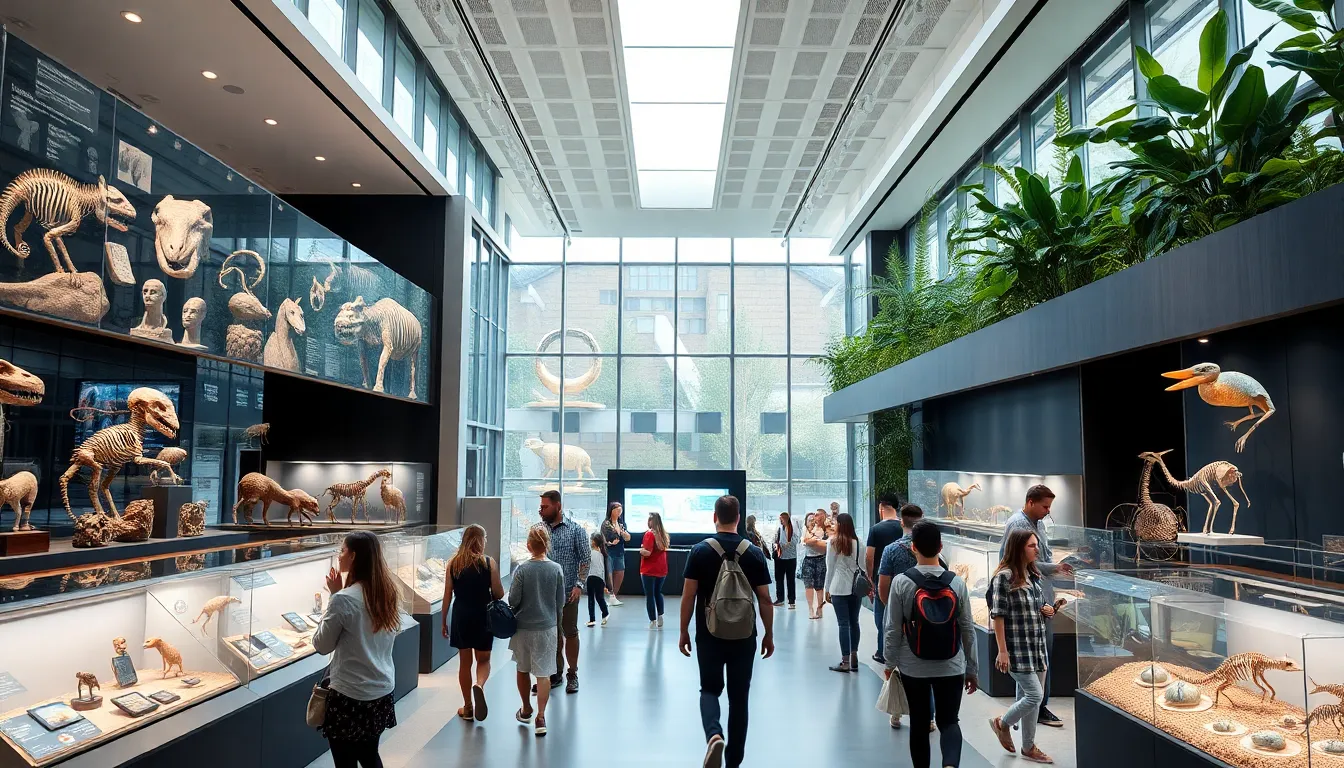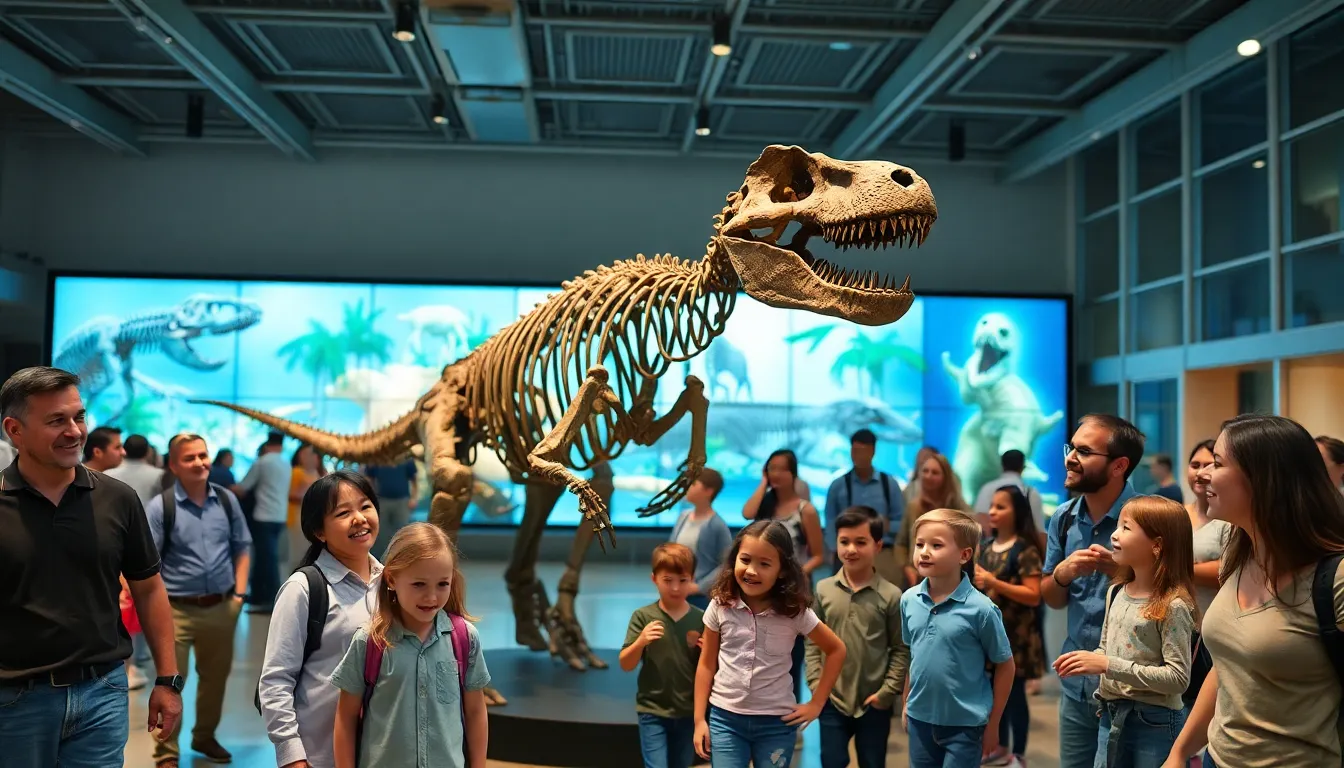Life science museums have transformed over the years from mere collections of specimens to vibrant hubs of education and engagement. Have you ever pondered why your childhood trips to the museum felt like a magical adventure? Well, it turns out there’s a fascinating backstory behind these institutions that blends education with entertainment. In this text, we leap through the ages to explore how life science museums have evolved, what milestones marked their journey, and how they’re adapting to the technological age, all while ensuring the public is not just a spectator, but an active participant in the wonders of science.
Table of Contents
ToggleHistorical Background of Life Science Museums

The roots of life science museums can be traced back to the 18th century, a time when curiosity cabinets, or cabinets of curiosities, were all the rage among the elite. These were cabinets filled with peculiar items, ranging from ancient artifacts to strange animal remains, that sparked intrigue and wonder. As the 19th century rolled in, the concept evolved into more structured institutions focusing on natural history.
By the end of the 19th century, many cities boasted their own natural history museums, which often showcased shining examples of local biodiversity. The American Museum of Natural History in New York, established in the late 1800s, became a model for life science institutions worldwide, emphasizing education and scientific inquiry. Today, this rich history informs how museums curate exhibits, focusing on telling the stories of life itself, its origins, diversity, and the vital interconnectedness we all share.
Significant Milestones in Museum Development
Throughout the years, certain milestones have stood out as pivotal moments in the development of life science museums. The introduction of professional museum practices in the early 20th century established new standards for conservation, curation, and education.
In the 1970s, the democratization of science began, leading museums to broaden their appeal and reach. They recognized that science wasn’t just for scholars: it was for everyone. The “hands-on” exhibitions emerged during this period, inviting visitors to engage directly with the content rather than just viewing it passively. More recently, the advent of digital technology in the late 20th century opened up vast new avenues for exploration and interactivity, fundamentally transforming visitor experiences.
Key Exhibits That Shaped Public Perception
Key exhibits have continually shaped how the public perceives life sciences. For instance, the unveiling of the full dinosaur skeleton at the American Museum of Natural History grabbed headlines and piqued public interest. This one exhibit captured imaginations and underscored the depth and breadth of paleobiology.
Similarly, other striking exhibits like the “Body Worlds” series have offered people stunning visual insights into human anatomy, reinforcing how interconnected and complex the human body truly is. These examples illustrate how thoughtful curation can not only educate the public but also spark deeper interest in science and discovery.
The Role of Technology in Modern Life Science Museums
In modern digital era, technology plays a transformative role in life science museums. Interactive displays, augmented reality (AR), and virtual reality (VR) experiences create immersive environments where visitors can explore biological concepts in engaging ways. Imagine walking through a rainforest and pointing your device to see detailed information about each species, technology makes this possible.
Besides, museums use social media to reach wider audiences, offering virtual tours and educational content that extend beyond the museum walls. This engagement is crucial, especially in today’s global climate, where access to information is both necessary and expected.
Engaging the Public: Educational Programs and Outreach
Engagement strategies are vital for modern life science museums. Educational programs are tailored not only for school groups but also for families, adults, and underserved communities. Workshops, lectures, and hands-on activities allow for deeper dives into topics like genetics, ecology, and conservation.
Outreach programs extend the museum’s impact into the community, making science accessible to those who might otherwise never step foot inside. This holistic approach opens doors, fostering a love for science across diverse demographics. Every event cultivates curiosity, ensuring that the next generation can appreciate the wonders of life sciences.
The Importance of Collaboration in the Museum Community
Collaboration is key to the evolution of life science museums. Institutions often partner with universities, research organizations, and other museums to enhance their offerings. These alliances help knowledge exchange, improving the quality of exhibits.
For example, working with scientists allows museums to present cutting-edge research in ways that resonate with the public. Also, partnerships often lead to joint exhibitions that broaden the scope of what a museum can present, exposing visitors to a richer, more diverse range of content. Collaboration not only amplifies resources but also strengthens the institution’s role as an education leader.
Future Trends in Life Science Museums
As we look ahead, several trends are emerging in life science museums. Sustainability is becoming a central theme, with many institutions striving to showcase not only the wonders of biodiversity but also the urgent need to protect it.
Also, the incorporation of artificial intelligence (AI) and machine learning is on the rise. These technologies can personalize visitor experiences, responding to individual interests and questions. Imagine walking into a museum and having an AI guide tailor your tour based on what excites you the most. Such innovations promise to keep life science museums relevant and engaging in an ever-evolving world.




